Ornament in Contemporary Iranian Architecture (Case Study: Prominent Buildings in Tehran after the Islamic Revolution)
Abstract
:1. Introduction
2. The Function of Ornament in Architecture
2.1. Ornament, Beauty, and Delight
In the design of buildings, there are several scales—corresponding to the human range of scales, 1 cm to 1 m—that are difficult to justify purely on structural grounds. Yet, in order to define a connected hierarchy of scales, which is a prerequisite for the visual coherence of the objects, those scales have to be present in the structure.
2.2. Ornament and Communication
2.3. Ornament and Utility
3. Ornament in Iranian Contemporary Architecture
4. Research Methods and Materials
4.1. Research Samples and Data Collection Methods
4.2. Evaluation Criteria and Data Analysis Method
4.2.1. Decoration
4.2.2. Design
4.2.3. Detail
5. Results
6. Discussion and Conclusions
- Context-related Factors. An examination of the samples indicates that there is a clear relationship between the speed and distance by which people can observe the building and the types of visual expression. For example, ornaments and other surface details are mostly employed on the ground level of facades in high-density urban contexts, where they are exposed to pedestrians. In contrast, design, as the largest scale of aesthetic effects, is used in free-standing buildings that are located near highways or over hills, whose form should be designed in a way to be visible to car drivers from long distances. Another context-related factor that influenced the buildings’ visual expression is the existing codes and regulatory requirements for new constructions in some areas of the city, especially the historic areas. The new Malik library and museum (Figure 21) in one of the historical districts of Tehran, for example, is one of the studied samples whose facade was designed in total accordance with the principles of a traditional architectural style called Isfahan.
- Mediator Factors
- Building program. Studies reveal that the diminishing number of skillful artisans after the advent of the industrialization process in Iran, and the limitation of available project funding and time, are among the main reasons behind the absence of handmade ornaments in a considerable number of contemporary constructions.
- “Building use” is also found to be influential in architectural expression. Results indicate that traditional types of ornament (such as arabesque and muqarnas style, etc.) are mostly used in religious and governmental buildings, while in functional and industrial buildings such as healthcare and service centers and factories, “design” and “Detail” are the main agents of aesthetic affect.
- Tastes and Desires. Clients have a considerable impact on the direction of the architectural design process and the quality of their final products. In fact, they may direct the creation of either significant or worthless buildings through the type of designer they hire, their level of intervention in the process of design, and the proper or arbitrary implementation of the project (in cases where they are the construction superintendent as well). Accordingly, some experts attributed the existent chaos in Iranian market-oriented constructions of recent decades to the unprecedented authorization given through postmodernism theories to clients who mostly lack good aesthetic and architectural taste. However, this is not the case in our study, as most of our samples were designed by leading architects that have a high level of architectural knowledge and sufficient authority to pursue their ideas. In this regard, the prevalence of detail and design as the major agents of visual expression, and the weak presence of symbolic and applied ornaments in their designs, could be interpreted as signs of the popularity of modernism among Iranian architects, and the influence of other context-related and mediator factors, as discussed earlier.
- External Factors. External factors can be divided into the two following sub-groups:
- National-level Factors. Taking into consideration that architecture schools and competitions play a significant role in the formation and transmission of architectural theory and practice through affecting architects’ tastes and thought, some of our findings regarding the architects’ preference for employing “design” and “detail” would be understandable. The prioritization of “form” over “ornament”, which was a part of the modernism agenda in the first decades of 20th century in Europe, became very popular in Iranian architecture schools during the 1940s and 1950s (Bani Masoud 2002), when a noticeable number of national architecture competitions referees and the majority of Iranian leading architects (including 80% of the studied buildings’ designers) were students.
- Global-level Factors. The results revealed that the application of structure-integrated and performative ornaments has increased in contemporary Iranian architectural practices. One of the reasons behind the popularity of such ornaments is the unprecedented advancement in design and construction technologies in recent years, and the emerging interest in structure as a generator of form. This development has resulted in the formation of a new relationship between skin (facade) and bones (structure), crossbreeding ideas of structure and concepts of decoration. In these new typologies, the use of overt patterning in structural systems blurs the line between what is structural and what is decorative, and results in a third type, deep decoration—decoration that is both below and on the surface, and creates new spatial effects (Rappaport 2006).
Acknowledgments
Author Contributions
Conflicts of Interest
References
- Abercrombie, Stanley. 1990. A Philosophy of Interior Design. New York: Harper & Row. [Google Scholar]
- Ahani, Fatemeh, and Iraj Etessam. 2016. Directions and Intellectual Bases of Ornament Criticism in Modern Architectural Literature. Rupkatha Journal on Interdisciplinary Studies in Humanities 8: 298. [Google Scholar]
- Alexander, Christopher, Sara Ishikawa, Murray Silverstein, Joaquim Romaguera i Ramió, Max Jacobson, and Ingrid Fiksdahl-King. 1977. A Pattern Language. New York: Oxford University Press. [Google Scholar]
- Alexander, Christpher. 1964. Notes on the Synthesis of Form. Cambridge: Harvard University Press. [Google Scholar]
- Bani Masoud, Amir. 2002. Contemporary Architecture of Iran. Tehran: Nashre Honare Memarie Gharn. [Google Scholar]
- Bloomer, Kent C., and John Krestem Jespersen. 2002. Ornament as Distinct from Decoration. Available online: http://ornament-scholar.blogspot.com/2014/02/ornament-as-distinct-from-decoration_5274.html (accessed on 6 March 2016).
- Bordeleau, Anne. 2016. Charles Robert Cockerell, Architect in Time: Reflections Around Anachronistic Drawings. London and New York: Routledge (Taylor & Francis group). [Google Scholar]
- Brolin, Brent C. 1985. Flight of Fancy: The Banishment and Return of Ornament. New York: St. Martin’s Press. [Google Scholar]
- Carlson-Redding, Kelly. 1996. detail, Detail, Ornament, and decoration: A Taxonomy. In 84th ACSA Annual Meeting: Theory and Criticism. Washington: Association of Collegiate Schools of Architecture. [Google Scholar]
- Engels-Schwartspaul, Anna Christina. 2001. Myth, Symbol, Ornament: The Loss of Meaning in Transition. Ph.D. Thesis, University of Auckland, Auckland, New Zealand. [Google Scholar]
- Farrell, Gavin R. 2005. Ornament: Semantics and Tectonics in Contemporary Urban Architecture. Master’s Thesis, University of Cincinnati, Cincinnati, OH, USA. [Google Scholar]
- Focillon, Henri. 1948. The Life of Forms in Art. New York: Schults Wittenborn. [Google Scholar]
- Ghobadian, Vahid. 2013. Theories and Styles in Contemporary Architecture of Iran. Tehran: Elm e Memar. [Google Scholar]
- Gombrich, Ernst Hans. 1979. The Sense of Order: A Study in the Psychology of Decorative Art. London: Phaidon. [Google Scholar]
- Grabar, Oleg. 1992. The Mediation of Ornament. Princeton: Princeton University Press. [Google Scholar]
- Habib, Farah, Iraj Etesam, S. Hadi Ghoddusifar, and Nahid Mohajeri. 2012. Correspondence Analysis: A New Method for Analyzing Qualitative Data in Architecture. In Digital Fabrication. Edited by Kim Williams. Basel: Springer. [Google Scholar]
- Hejazi, Mehrdad, and Fatemeh Mehdizadeh Seraj. 2014. the Relation of Meaning, Beauty, Shape and Structure in Islamic Architecture. Researches in Islamic Architecture 2: 7–22. [Google Scholar]
- Khorashahi, Fariba. 2013. A Revetment. Master of Architecture, Waterloo, ON, Canada. [Google Scholar]
- Marks, Laura. 2007. The Haptic Transfer and the Travels of the Abstract Line: Embodied perception from classical Islam to modern Europe. In Verkoerperungen/Embodiment. Edited by Christina Lammer, Catherin Pilcher and Kim Sawchuk. Vienna: Löcker Verlag. [Google Scholar]
- Mitrache, Anca. 2012. Ornamental Art and Architectural Decoration. Procedia—Social and Behavioral Sciences 51: 567–72. [Google Scholar] [CrossRef]
- Pirnia, Mohammad Karim. 2008. Study on Styles of Irnian Architecture. Edited by G. H. Memarian. Tehran: Soroush Publications. [Google Scholar]
- Rappaport, Nina. 2006. deep decoration. 30/60/90 Architectural Journal 10: 95–105. [Google Scholar]
- Riegl, Alois. 1992. Problems of Style: Foundations for a History of Ornament. Princeton: Princeton University Press, Original Edition, 1893. [Google Scholar]
- Ruskin, John. 1849. The Seven Lamps of Architecture. New York: J. Wiley. [Google Scholar]
- Sağlam, Hakan. 2014. Re-thinking the Concept of “Ornament” in Architectural Design. Procedia—Social and Behavioral Sciences 122: 126–33. [Google Scholar] [CrossRef]
- Salingaros, Nikos A. 1999. Architecture, Patterns, and Mathematics. Nexus Network Journal 1: 75–86. [Google Scholar] [CrossRef]
- Salingaros, Nikos A. 2000. The Structure of Pattern Languages. Architectural Research Quarterly 4: 149–61. [Google Scholar] [CrossRef]
- Semper, Gottfri. 2010. On the formal principles of adornment and its meaning as a symbol in art (second section). RES: Anthropology and Aesthetics. [Google Scholar]
- Trilling, James. 2003. Ornament: A Modern Perspective. Seattle and London: University of Washington Press. [Google Scholar]
- Vitruvius. 1960. The Ten Books On Architecture. Translated by Morris Hicky Morgan. New York: Dover Publications. [Google Scholar]
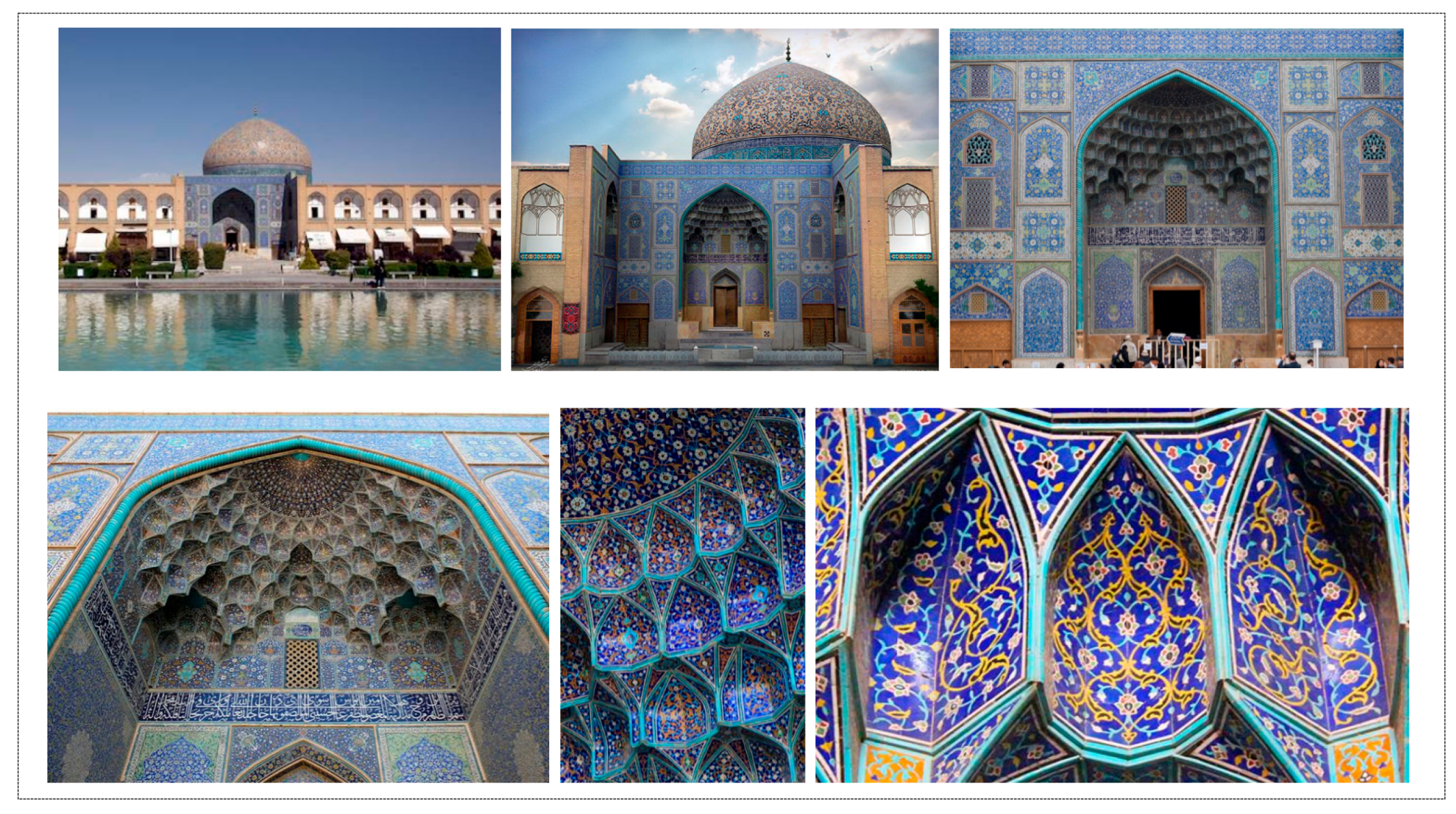




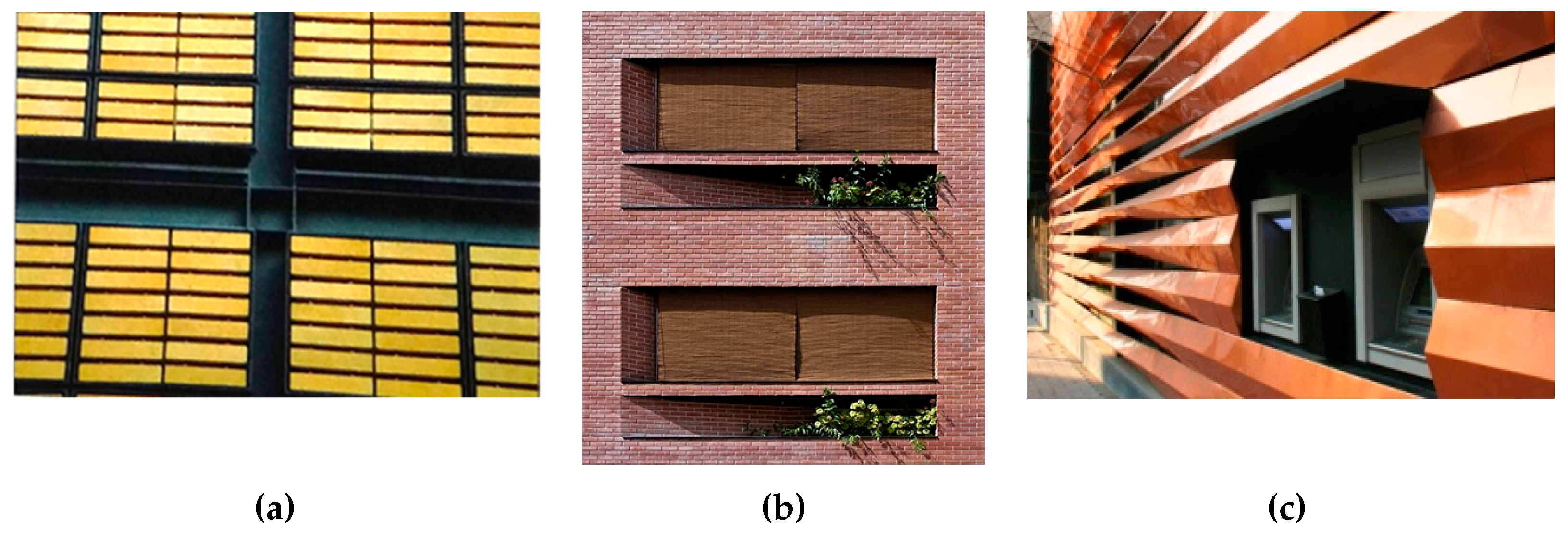
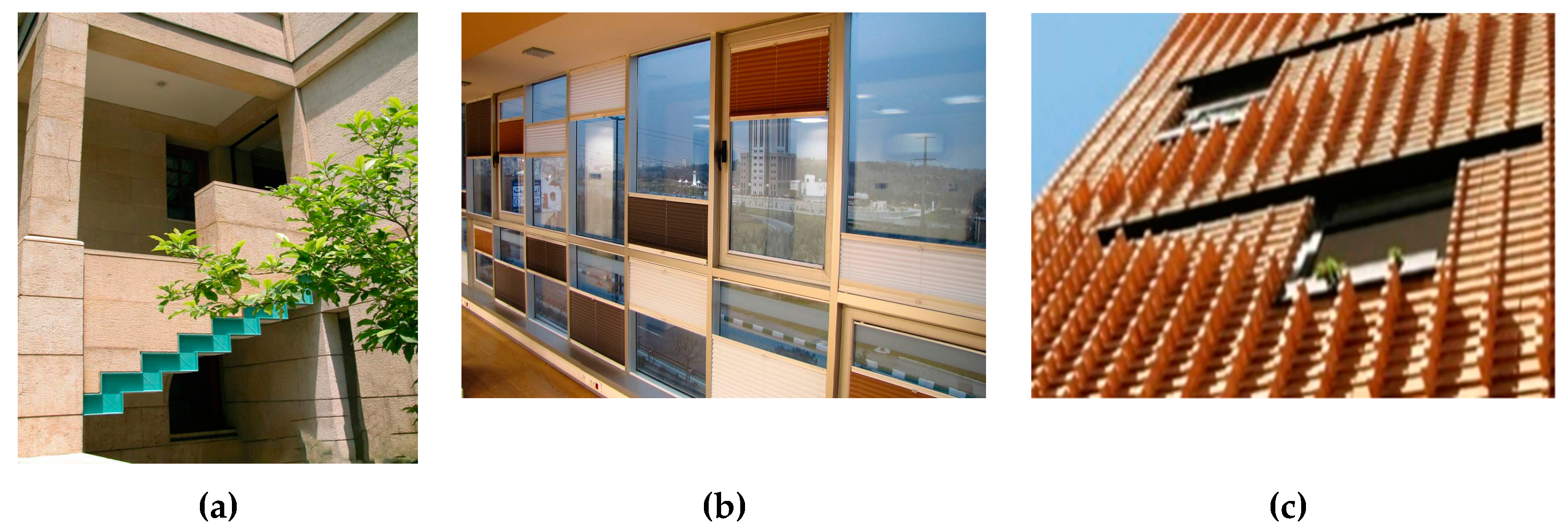
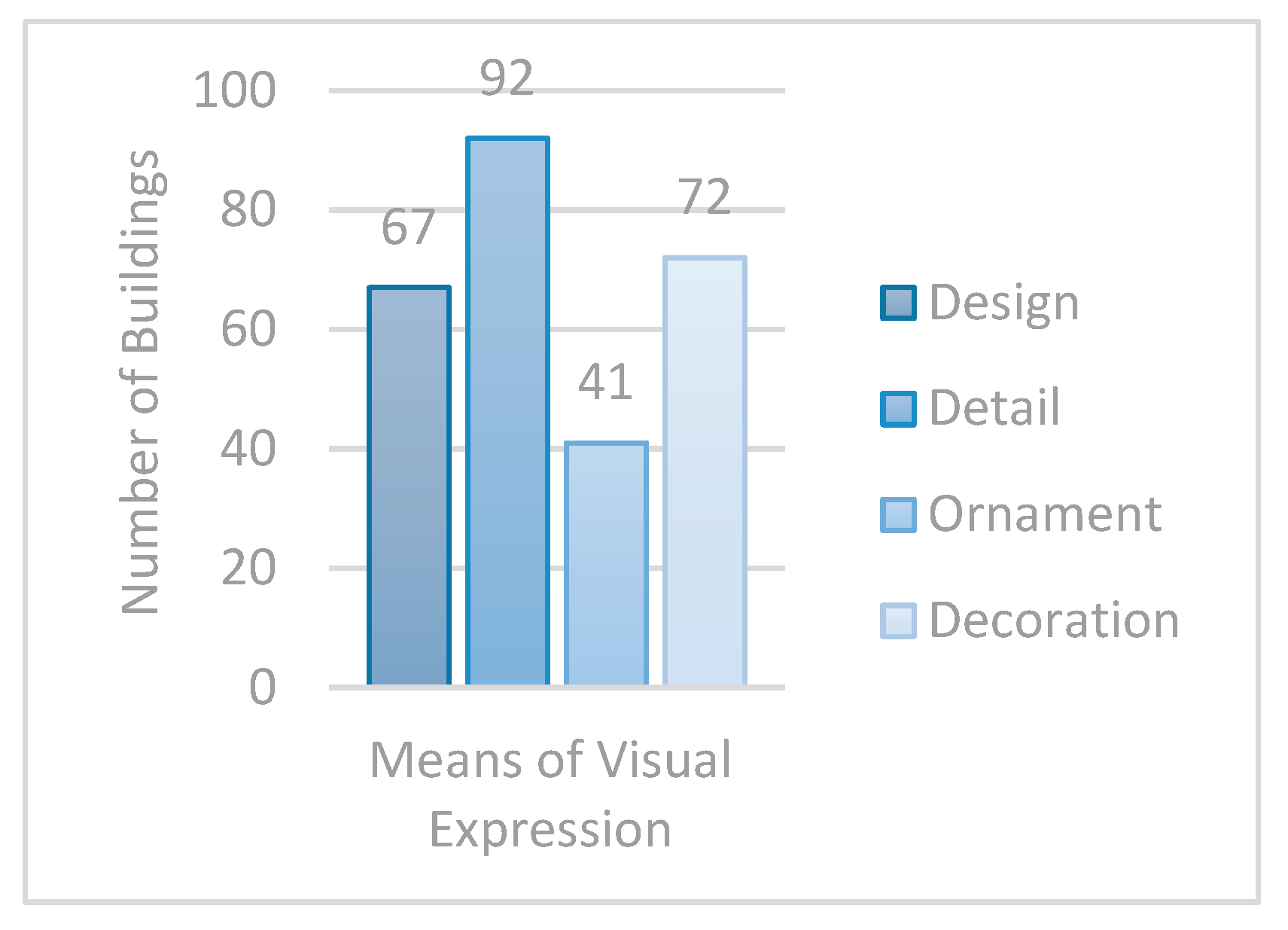


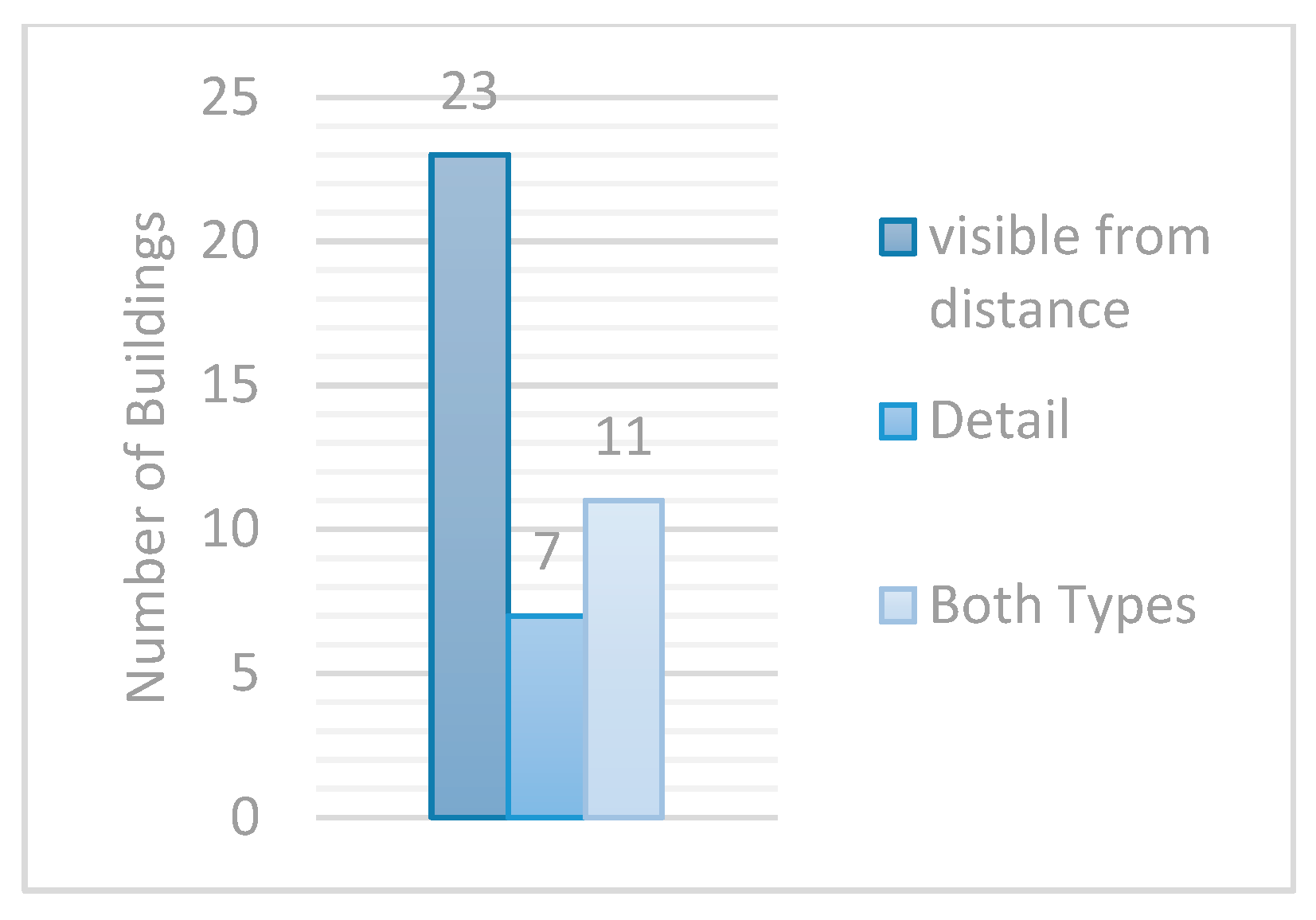
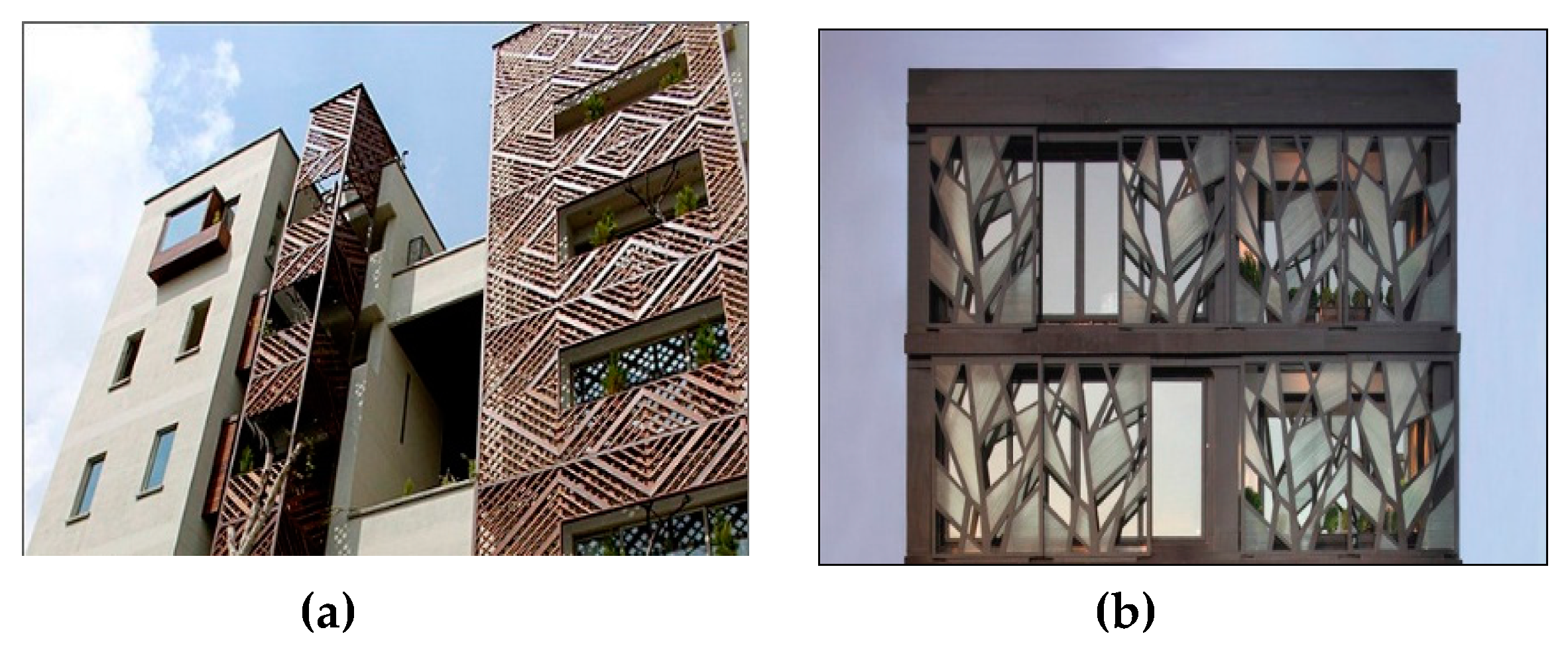
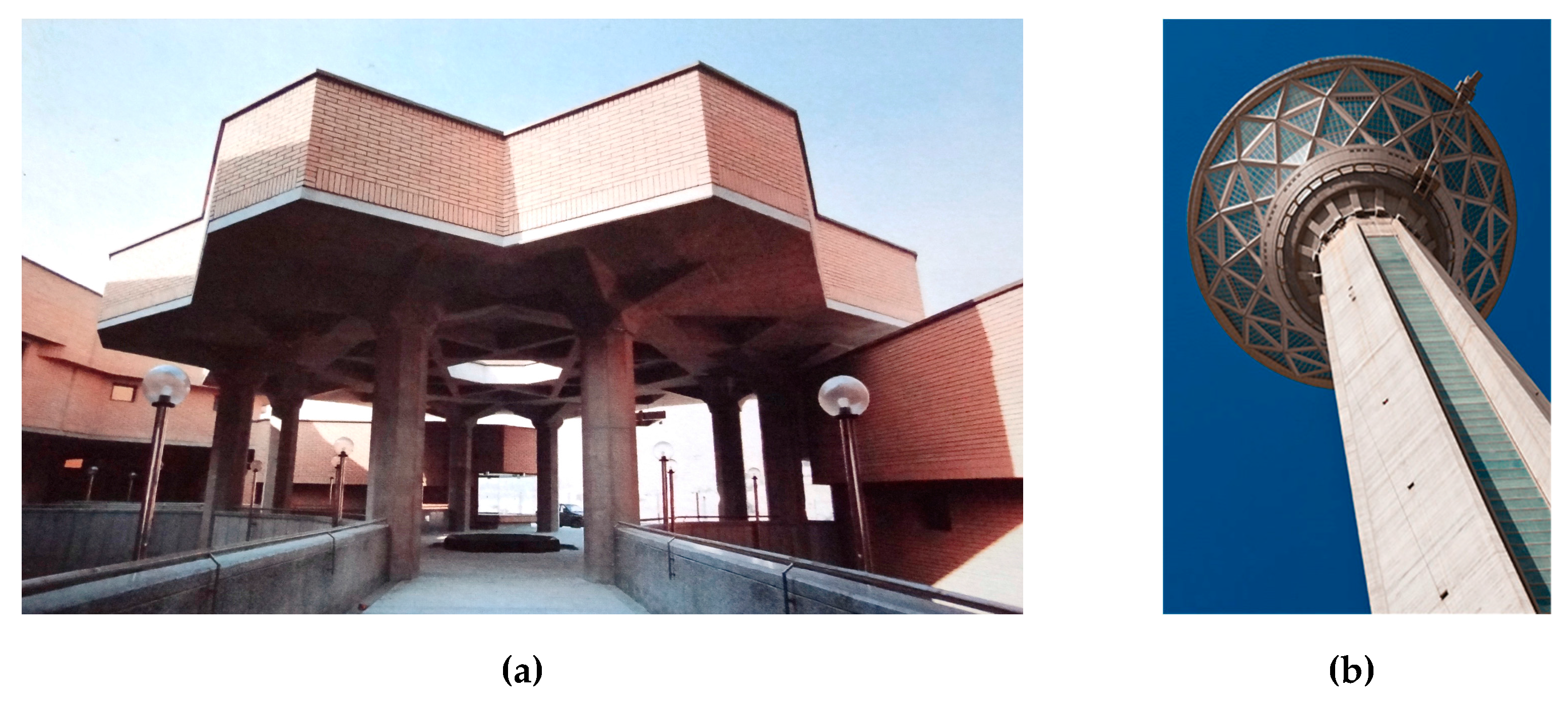



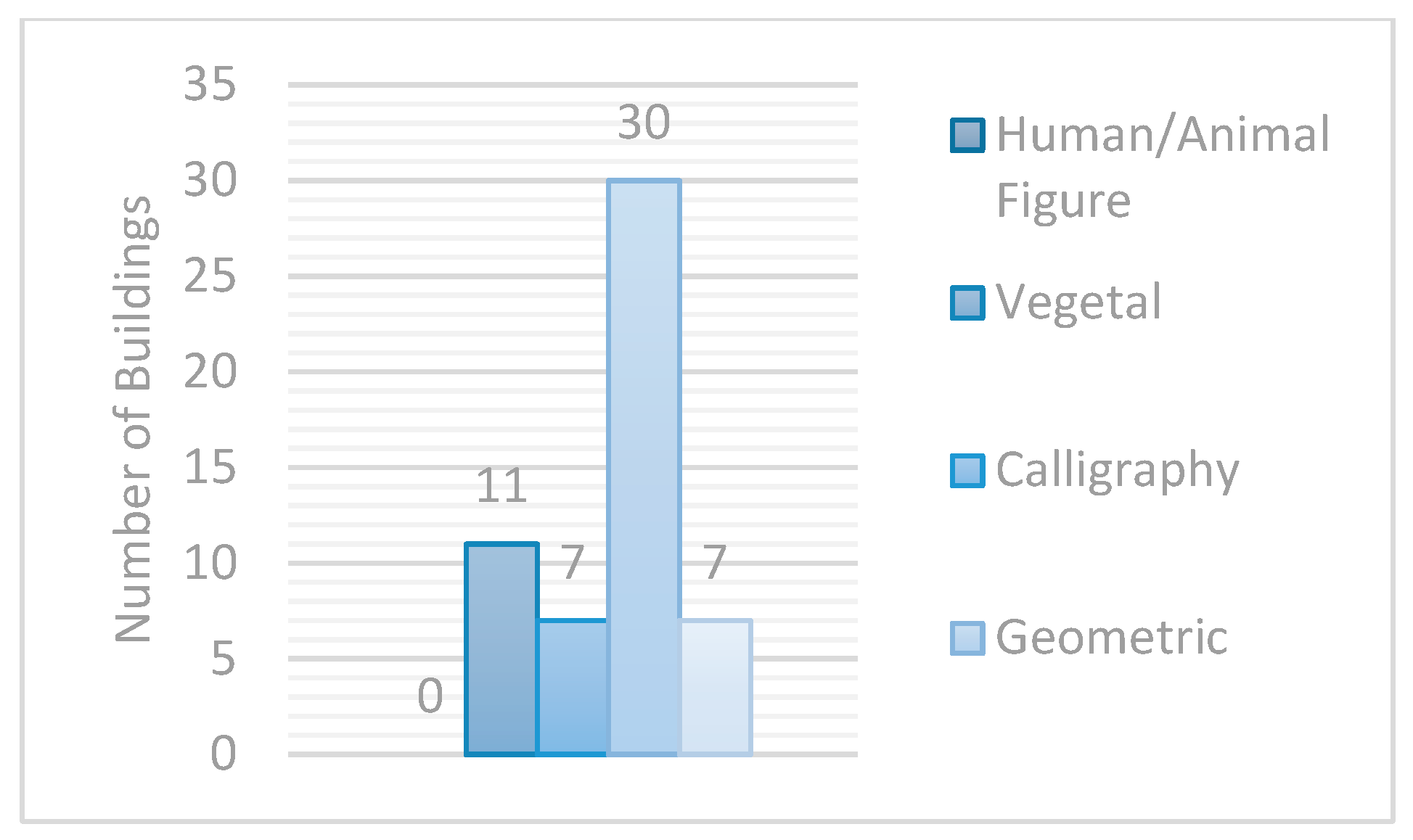


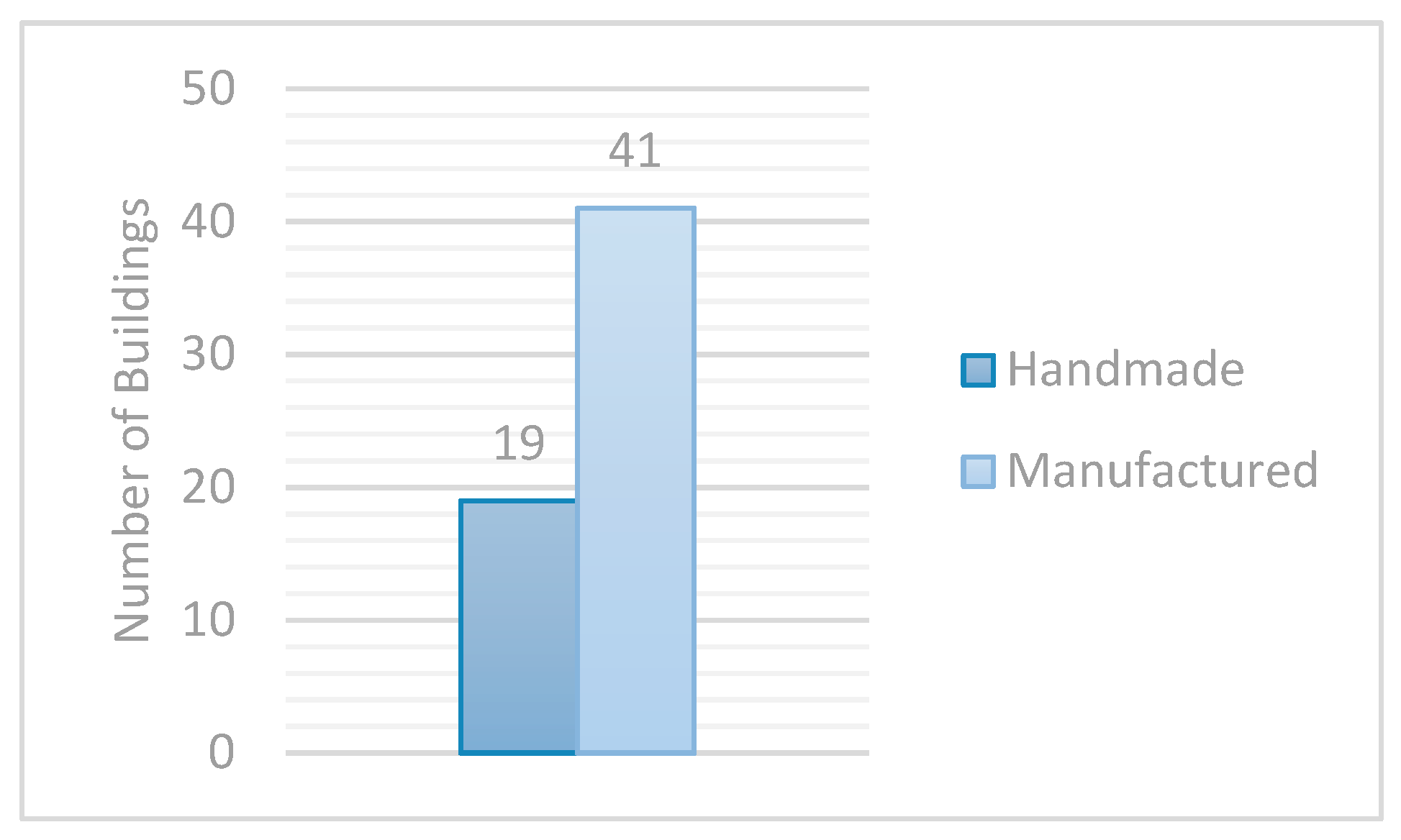
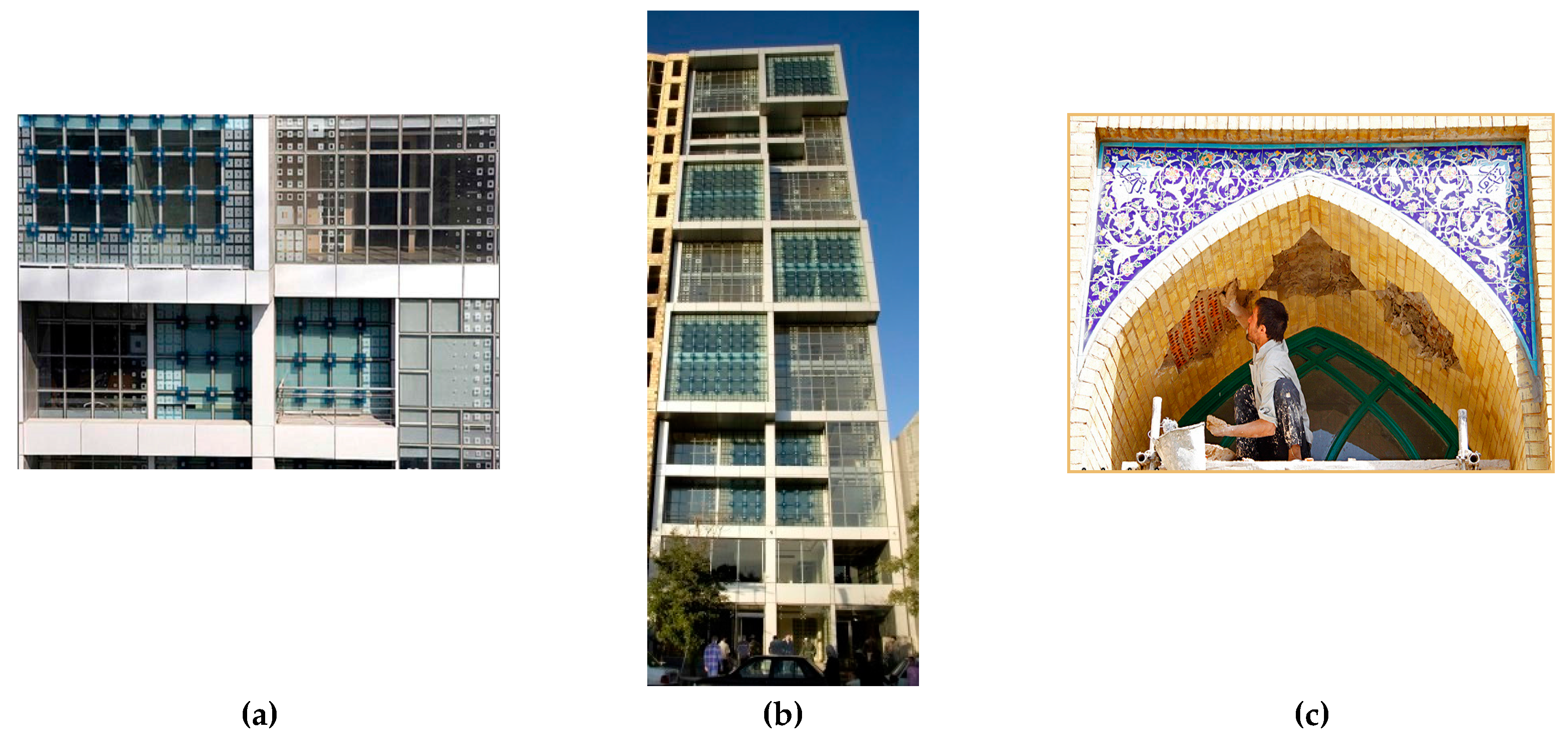

| Criteria | Form | Detail | Ornament | Decoration |
|---|---|---|---|---|
| Subject Matter | Tectonic and Non-Tectonic Concepts | Tectonic Concepts | Tectonic and Non-Tectonic Concepts | Non-Tectonic Concepts |
| Reference Mode | Representational and Ontological | Impurely ontological Representational | Impurely Representational | Representational |
| Necessity | Essential | Essential | Essential | Inessential |
| Content | Constructional Elements | Constructional Elements | Rhythmic and Transformed Motifs | Real Objects |
| Permanence | Bonded | Bonded | Bonded | Portable |
| Functional Aspects of Ornament | Physical Aspects of Ornament | ||||
|---|---|---|---|---|---|
| Utility | Mostly Utilitarian Function | Form | Geometric Pattern | ||
| Mostly Non-Utilitarian Function | Vegetal Pattern | ||||
| Calligraphy | |||||
| Human/Animal Figure | |||||
| Constructional Forms | |||||
| Communication | Reference Mode | Mostly Representational | Scale | Visible form Distance | |
| Detail | |||||
| Both Types | |||||
| Mostly Non- Representational | Abstract | Permanence | Integrated with Structure | ||
| Subjectless | Additive | ||||
| Symbolic Function | Symbolic Content | Iranian Symbol(s) | Both Types | ||
| Non- Iranian Symbol(s) | |||||
| Both Types | |||||
| Non- Symbolic Content | Production Method | Mostly Handmade | |||
| Mostly Manufactured | |||||
| Means of Aesthetic Effects | Frequency | Percentage |
|---|---|---|
| Design | 67 | 72 |
| Detail | 92 | 100 |
| Ornament | 41 | 44 |
| Decoration | 72 | 78 |
© 2017 by the authors. Licensee MDPI, Basel, Switzerland. This article is an open access article distributed under the terms and conditions of the Creative Commons Attribution (CC BY) license (http://creativecommons.org/licenses/by/4.0/).
Share and Cite
Ahani, F.; Etessam, I.; Islami, S.G. Ornament in Contemporary Iranian Architecture (Case Study: Prominent Buildings in Tehran after the Islamic Revolution). Arts 2018, 7, 1. https://doi.org/10.3390/arts7010001
Ahani F, Etessam I, Islami SG. Ornament in Contemporary Iranian Architecture (Case Study: Prominent Buildings in Tehran after the Islamic Revolution). Arts. 2018; 7(1):1. https://doi.org/10.3390/arts7010001
Chicago/Turabian StyleAhani, Fatemeh, Iraj Etessam, and Seyed Gholamreza Islami. 2018. "Ornament in Contemporary Iranian Architecture (Case Study: Prominent Buildings in Tehran after the Islamic Revolution)" Arts 7, no. 1: 1. https://doi.org/10.3390/arts7010001
APA StyleAhani, F., Etessam, I., & Islami, S. G. (2018). Ornament in Contemporary Iranian Architecture (Case Study: Prominent Buildings in Tehran after the Islamic Revolution). Arts, 7(1), 1. https://doi.org/10.3390/arts7010001




